
Selecting the right agency pricing model can be a make-or-break decision.
Marketing agency pricing models not only determine your profitability but also shape your agency-client relationships and overall business growth.
In this article, we delve into five profitable agency pricing models, analyzing the pros and cons of each to provide you with a comprehensive view of all the available options to choose from. We'll also touch upon effective strategies to boost your agency's profitability.
As an SEO audit and reporting tool being used by more than 2,000 digital agencies, we've built relationships with agencies from all over the world. Since we deal with thousands of agencies on a regular basis, we asked founders of top digital agencies to give us some insights on agency pricing models they are employing within their organizations.
Agency Founders & Executives Featured in this Article
We'd like to thank the following contributors for their valuable feedback and for sharing their professional insights:
- Darren Graham, Director @ 408 Media Group, United Kingdom
- Ilya Moskovoy, CEO @ IMPromo, United States
- Ben Hilton, Owner @ Switch Jam Digital, United Kingdom
- Sam Ancliff, Managing Director @ RevForm, United Kingdom
- Raymond Tembo, SEO Specialist @ Comrax Group, United States
- Simon Brisk, Co-founder @ Click Intelligence, United Kingdom
- Jordan Brunelle, Founder and Owners @ Brunelle Digital, United States

Whether you're a seasoned agency owner or starting your own digital agency, this guide will help you answer the question of which agency pricing model is best for your business.
What is an Agency Pricing Model?
An agency pricing model is essentially a blueprint that guides how your agency charges for its services.
It's not just about assigning a dollar value to what you offer, but also about articulating the unique value proposition of your agency to your clients. The right pricing model aligns with your agency's expertise, the complexity of tasks, and the value clients obtain from your services. It can significantly influence your agency's revenue and profitability.
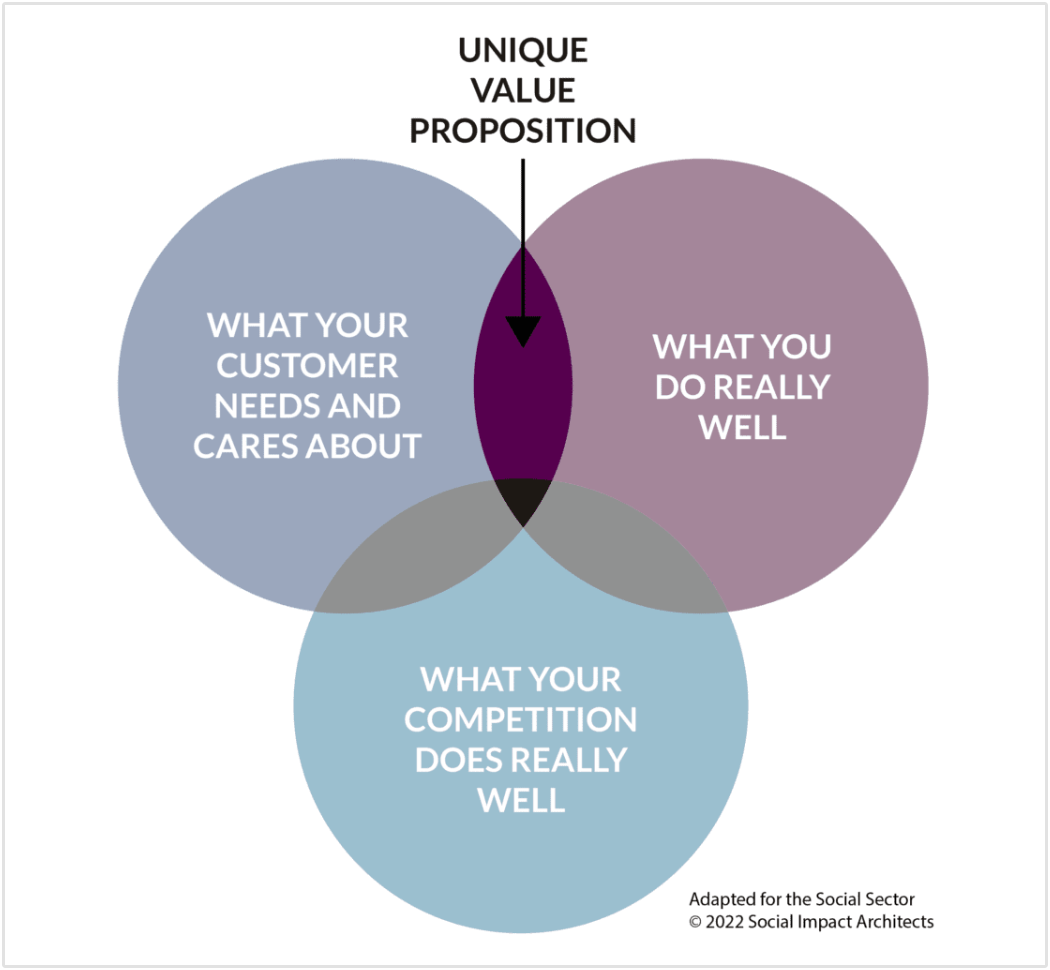
Image source: Social Impact Architects
Remember, there's no one-size-fits-all approach here; the best pricing model for your agency depends on various factors, including your target market, service offerings, and business goals (more on this later).
In the following sections, we will explore five different agency pricing models, helping you understand which could be best suited for your business.
Types of Agency Pricing Models
Each agency pricing model comes with its unique set of advantages and drawbacks, influencing not just your bottom line but also long-term business sustainability and scalability.
We will cover the following agency pricing models:
- Value-based agency pricing
- Hourly agency pricing model
- Project-based agency pricing model
- Performance-based agency pricing model
- Retainer-based agency pricing model
Value-Based Agency Pricing Model
The value-based agency pricing model is a customer-centric approach that aligns the price you charge with the perceived value your services bring to your clients. Instead of pricing based on hours spent or tasks completed, this model focuses on the outcomes and results that your agency can deliver.
408 Media Group, a digital agency based in the UK, uses the value-based pricing model. According to Darren Graham, director at 408 Media Group, the value-based agency pricing model allows agencies to align their fees with the specific needs and goals of each client, ensuring that they receive a tailored solution that delivers exceptional value.
"In our experience, a value-based pricing model fosters trust and transparency, as clients clearly understand the value they are receiving for their investment."
- Darren Graham, 408 Media Group
To determine the price in this model, the first step is to have a deep understanding of your client's business, their goals, and the potential impact of your services on their success. This requires open dialogue and strong communication with the client.
Next, quantify the value your agency can provide. This could be in terms of increased revenue, improved brand visibility, cost savings, or any other metric that resonates with your client's objectives.
Finally, set your price as a proportion of this value. For instance, if your marketing campaign can potentially generate an additional $100,000 for your client, you might charge 10-20% of this value.
Remember, the key to successful value-based pricing is demonstrating the tangible benefits your agency brings to the table, substantiated by solid evidence like case studies, testimonials, and statistics from previous results achieved.
Pros and Cons of Value-Based Agency Pricing Model
| Pros | Cons |
|---|---|
| Aligns your agency's incentives with client success, fostering stronger partnerships. | Requires a deep understanding of the client's business and industry, which can be time-consuming. |
| Allows for potentially higher profits as you're charging based on value, not hours spent. | Quantifying the value delivered can be challenging. |
| Focus is put on outcomes, not tasks or hours, which encourages efficiency and innovation within your agency. | Convincing clients of the value you can deliver may require more sophisticated sales skills. |
| Builds trust and transparency by tying fees to measurable results. | Risk of underpricing if the actual value delivered exceeds initial estimates. |
Hourly Agency Pricing Model
The hourly agency pricing model is a straightforward and commonly used pricing strategy among agencies, especially those just starting out. As the name suggests, this model charges clients based on the number of hours an agency dedicates to a project.
In essence, the agency sets an hourly rate and bills the client for every hour worked.
For example, if an agency's hourly rate is $150 and they work for 10 hours on a project, the client would be billed $1,500 under this pricing model.
This model offers clarity and predictability, allowing clients to plan their spending in advance. It's also quite simple for clients to understand, making it easier to sell, particularly for agencies that are just getting started.
However, it's important to note that while the hourly pricing model is easy to implement, it doesn't take into account the value delivered to the client - only the time spent. This can sometimes lead to undervaluing the agency's services, especially if they are able to deliver high-quality results efficiently.
That being said, many agencies find this model a good starting point before moving on to more value-based models as they grow and evolve.
To avoid "exchanging time for money", agencies can use a combination of the hourly pricing model and another pricing model.
One agency that employs this tactic is Switch Jam Digital, an SEO and lead generation agency in the United Kingdom.
Ben Hilton, owner of Switch Jam Digital, says that they class every service as a "Task" and have a fixed price for each. But then offers an upsell based on the hourly pricing model.
"For example, Technical Audit, Keyword Research, Core Web Vitals will all have a flat set price. Any remedial work required will then be paid per hour at a fixed rate."
Jordan Brunelle notes that at his agency, Brunelle Digital, a PPC agency based in Nashville, they also use the hourly model, but with a retainer built in.
We start with a monthly hourly minimum. This fluctuates based on the client and their needs. We will bill that time no matter what. That serves as our PPC management fee (or our retainer). If the client goes over those 10 hours, we bill them by the hour. This is simple and clear for the client to understand. It allows us to use a retainer model while still protecting ourselves if the client requires a lot of additional time.
Another interesting tactic is using the hourly-based pricing model as a basis to create monthly subscriptions or "packages". RevForm is a SaaS marketing agency that uses this tactic. Here's what Sam Ancliff, managing director at RevForm has to say about their pricing model:
"We use a subscription based pricing model, that under the hood is based on billable hours. So for our primary service offering we charge £2k/£5k/£16k per month depending on the level of service provided. Although not advertised this way, we base this on those same packages taking us 10-15, 25-30 and 80-100 hours per month respectively."
Pros and Cons of Hourly-Based Agency Pricing Model
| Pros | Cons |
| This model is easy to understand and implement. You simply calculate the number of hours spent on a project and multiply by your hourly rate. | Earning potential is capped by the number of billable hours your team can work. |
| Adaptable to changes in project scope. | Efficiency isn't rewarded; in fact, finishing tasks faster could mean less income. |
| You get paid for all the work you do. Whether a task takes longer due to unforeseen complexities or client requests for revisions, you're compensated for every hour spent. | High-quality work that's completed quickly might be undervalued, while slower work with less impact might be overpriced. |
| Offers transparency to clients who can see exactly what they're paying for. | Total cost can fluctuate depending on how long tasks take. This uncertainty can make budgeting difficult for clients. |
Project-Based Agency Pricing Model
The project-based pricing model, also known as fixed pricing, is a strategy where agencies charge clients a predetermined, fixed fee for a specific project.
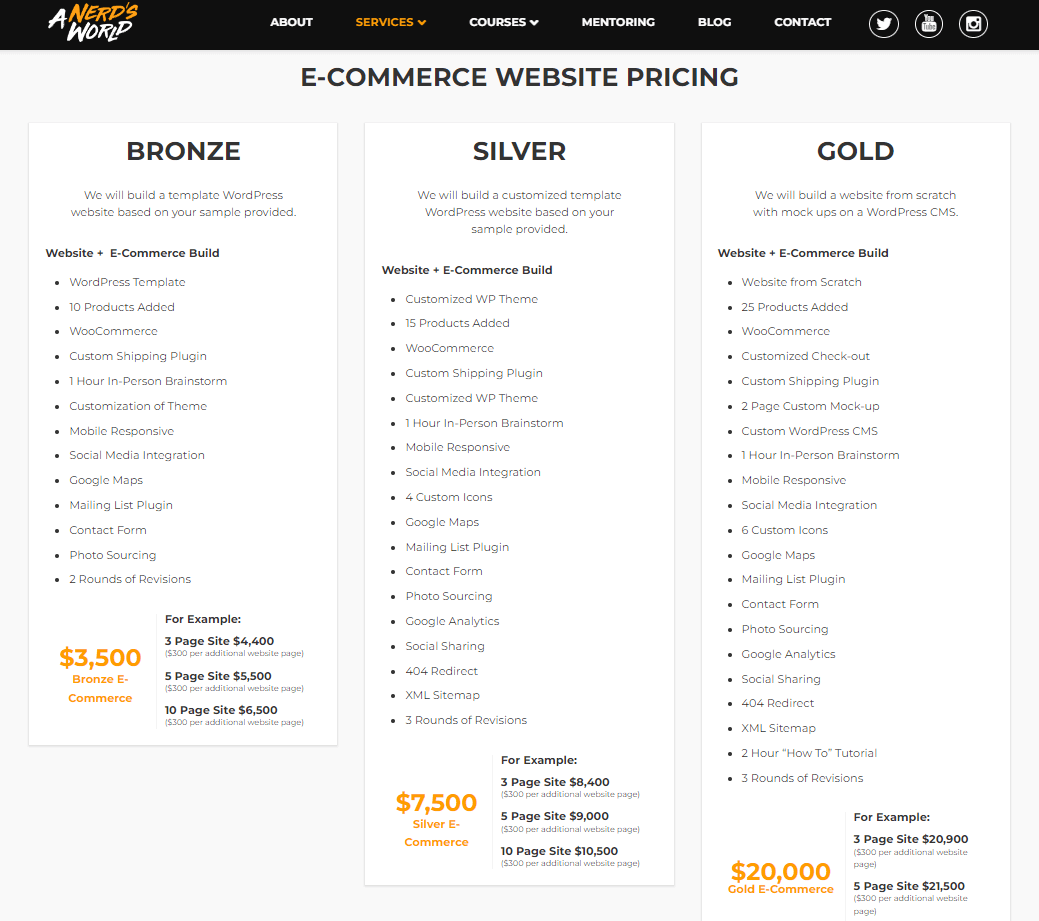
This model is based on the type of project and its deliverables, rather than the amount of time it takes to complete them. It's a popular choice among agencies and freelancers because it offers clarity and predictability both for the service provider and the client.
For example, imagine you run a web development agency. Under a project-based pricing model, you might charge a fixed price of $3,500 for a website design package.
This price includes all the tasks involved in the project - from initial consultation and planning, through design and development, to testing and launch. Whether it takes your team 30 hours or 60 hours to complete the project, the client pays the same price.
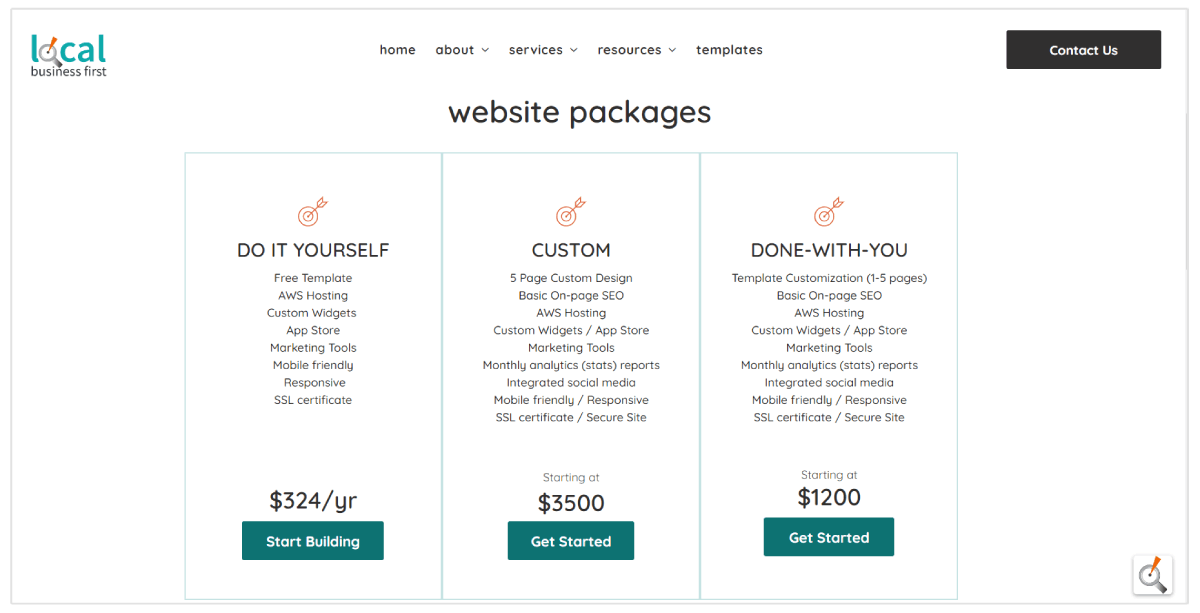
This approach rewards efficiency and innovation, as the quicker and more effectively your team can deliver the project, the higher your effective hourly rate becomes.
Click Intelligence is a link-building and SEO agency that uses the project-based agency pricing model.
We accumulate all the services that are needed for the project and set our profit margin. It happens once in a while that projects exceed their completion time and the client always understands. However, this pricing model is the most reliable, and we have a 99% success rate following it so far.
- Simon Brisk, Co-founder
We should mention that this pricing model requires careful scoping and estimating at the outset to ensure profitability.
Pros and Cons of the Project-Based Agency Pricing Model
| Pros | Cons |
| Clients know exactly what they're paying upfront. | Estimating the cost of a project can be tricky. |
| Makes budgeting easier and eliminates concerns about costs spiraling due to extended hours. | If you underestimate the amount of work required, you might end up working more hours without additional pay. |
| This model charges for the value of the end product or service, not the time it takes to deliver it. | If the project scope changes significantly, it can be difficult to adjust the pricing without renegotiating the contract. |
| If your team completes the project faster than anticipated, your effective hourly rate goes up. This encourages efficiency and innovation. | With a fixed price, there's more pressure to meet deadlines. Delays can eat into your profit margin. |
Performance-Based Agency Pricing Model
The performance-based agency pricing model is a results-driven approach where an agency's compensation is tied directly to the success metrics or Key Performance Indicators (KPIs) agreed upon with the client.
In other words, this model is all about "pay for performance".
Depending on the nature of the project and the client's goals, different KPIs can be used. Some common ones include:
- Sales or Conversions: The agency is paid based on the number of sales or conversions they help generate. This is a common metric used in online marketing campaigns.
- Lead Generation: For businesses focused on building their customer base, the agency might be paid for every lead they bring in.
- Website Traffic: If the goal is to increase visibility, an agency might be compensated based on the number of visitors they drive to the client's website.
- Brand Awareness: This could be measured through metrics like social media impressions, mentions, or shares.
- Customer Retention or Engagement: In some cases, agencies might be paid based on how well they keep existing customers engaged or how much they improve retention rates.
For a startup agency with low overhead costs and a highly skilled team, the performance-based pricing model can be particularly advantageous. Here's why:
- Attract Clients: By tying your fees to results, you can attract clients who might be hesitant to pay large sums upfront without any guarantee of success.
- Showcase Skills: If your team is confident in their abilities, this model allows you to demonstrate your expertise and deliver tangible results.
- Higher Potential Earnings: If your campaigns are successful, performance-based pricing can lead to higher earnings than fixed-rate models.
- Build Credibility: Delivering strong results can help establish your agency's reputation, leading to more business in the future.
Comrax Group is a global digital agency that uses the performance-based pricing model. We spoke with Raymond Tembo, an SEO specialist at Comrax to give us further insights into why they chose this model.
"In an industry where results matter, we often align our pricing with performance-based metrics. This approach provides a win-win situation, as clients pay based on the actual outcomes achieved. It incentivizes our team to continuously optimize campaigns for maximum ROI, and clients can confidently invest in our services, knowing their budget is directly tied to results."
It's important to note that this model also comes with risks. If your campaigns don't meet the agreed-upon KPIs, your earnings could be significantly lower than with other pricing models.
Therefore, clear communication, realistic goal setting, and careful contract negotiation are crucial when adopting a performance-based pricing model.
Pros and Cons of Performance-Based Agency Pricing Model
| Pros | Cons |
| By tying your payment to results, you can show clients that you're confident in your team's abilities and committed to their success. | If your campaigns don't meet the agreed-upon KPIs, your earnings could be lower than with other pricing models. |
| Clients are assured they'll only pay for the results they see. | Achieving the KPIs sometimes depends on factors outside your control, such as the client's willingness to implement your recommendations. |
| When your campaigns hit or exceed the agreed-upon KPIs, you stand to earn more than you might with other pricing models. | Defining the right KPIs can be tricky, especially for less tangible goals like brand awareness. |
Retainer-Based Agency Pricing Model
The retainer agency pricing model is a type of agreement where the client pays a set fee, often monthly, for a predetermined scope of work.
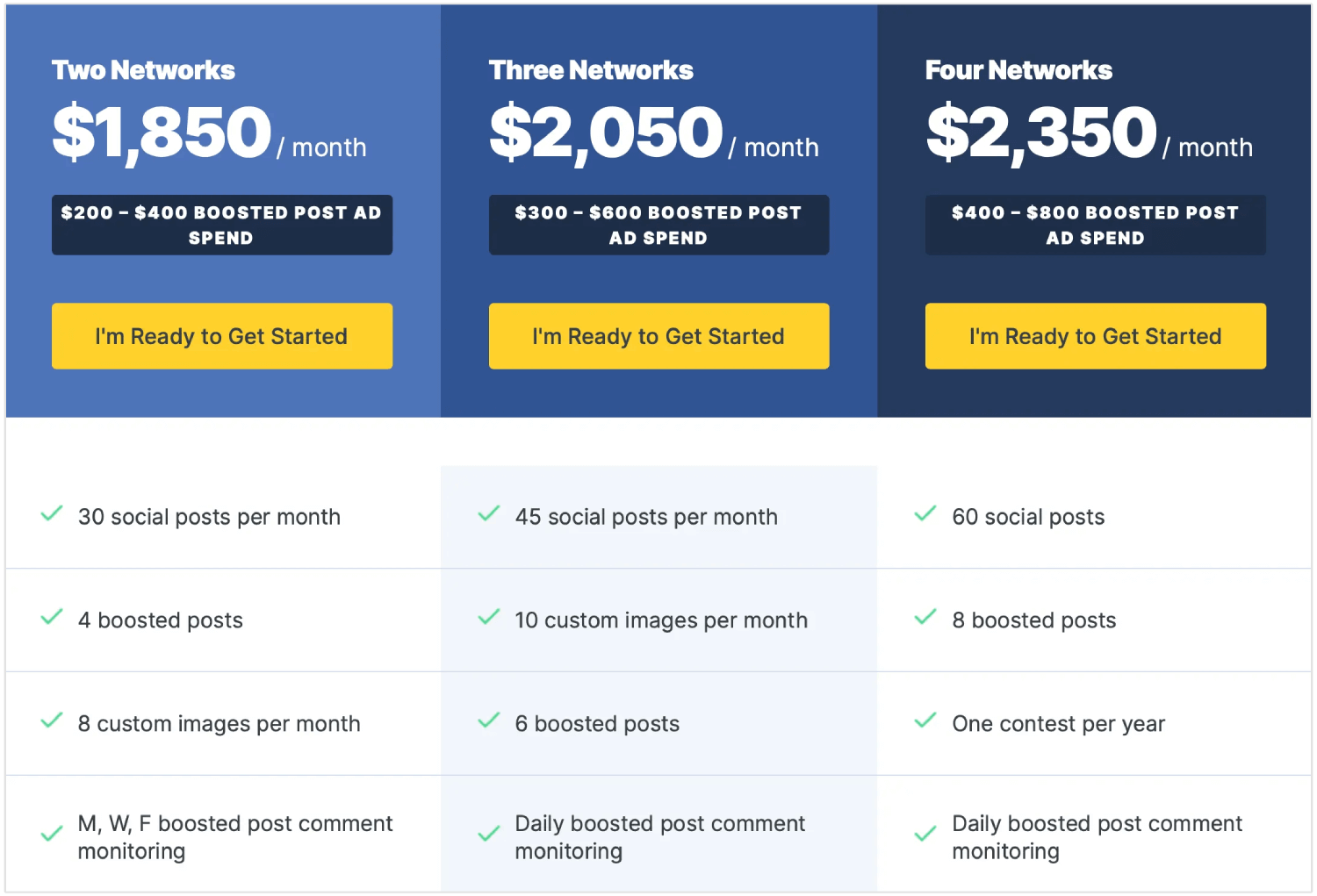
The agency and client collaborate to define the services and deliverables covered by the retainer, which provides the agency with a recurring revenue stream and allows the client to budget their marketing costs more predictably.
Ilya Moskovoy is the CEO of IMPromo, a digital agency offering a range of SEO services, PPC, and social media marketing. He notes that they actually use a combination of the retainer and performance-based agency pricing model.
According to Ilya, the retainer portion of their pricing models ensures a predictable revenue stream for their agency, which is essential for resource planning and management.
"Our retainers cover the foundational services that we provide to all our clients, such as ongoing market research, content creation, and basic campaign management. In addition to the retainer, we incorporate a performance-based pricing model where additional fees are tied to the achievement of specific key performance indicators (KPIs)."
- Ilya Moskovoy, IMPromo
This agency pricing model fosters an ongoing relationship between the agency and the client. This can lead to a deeper understanding of the client's needs and more effective long-term strategies.
It's important to note that the retainer model is not without its challenges. It requires careful scoping of work and clear communication to ensure both parties are aligned on what's included in the retainer. And while it offers more predictability, it may be less flexible than other models if the client's needs change over time.
Pros and Cons of Retainer Agency Pricing Model
| Pros | Cons |
| With a set monthly fee, you know exactly what to expect. | While this model offers predictability, it can be less flexible if a client's needs change partway through the agreement. |
| The retainer model fosters ongoing relationships with clients. | Requires careful scoping of work upfront |
| This model is about delivering value through a defined scope of work. This incentivizes efficiency and innovation within your team. | There's a risk of underestimating the amount of work required, leading to overcommitment. |
Most Popular Agency Pricing Model
The most popular agency pricing model is the hourly rate model. This pricing model is straightforward and easy to explain, which likely contributes to its popularity. It provides a clear framework for billing, where each hour of work is accounted for, making it a transparent choice for both agencies and clients.
How to Choose the Right Pricing Model for Your Agency
As an agency founder, your pricing model is more than just a business decision—it's a strategic move that influences your agency's growth trajectory. It's about striking a balance between your costs and the value you deliver, ensuring fair compensation for your expertise.
But it's also about aligning with your clients' budgets and expectations, fostering strong relationships that drive mutual success.
Here are some key factors to consider:
- Understanding Your Costs: Start by understanding your operating costs, including salaries, overheads, agency software, and any other expenses related to delivering your services. This will help you set a price that covers your costs and ensures profitability.
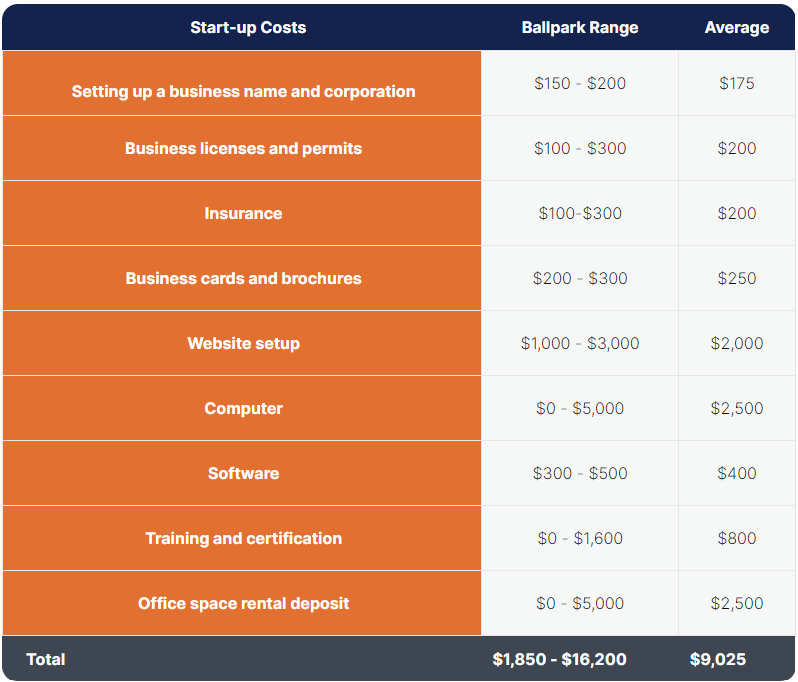
- Value Proposition: Consider the value you offer to clients. If your agency provides a specialized service that delivers high value, you may be able to charge a premium.
- Market Rate: Research what similar agencies in your market are charging. While you shouldn't base your pricing solely on this, it's helpful to understand what clients might expect to pay for similar services.
- Client Budgets: Factor in your typical client's budget. If you primarily serve small businesses, for example, they may prefer a predictable monthly retainer. Larger corporations may be more comfortable with project-based or performance-based pricing.
- Your Business Goals: Align your pricing strategy with your business goals. If you want to build long-term client relationships, a retainer model might be best. If you prefer one-off projects, consider project-based pricing.
- Risk Assessment: Evaluate your tolerance for risk. Performance-based pricing can offer higher rewards but also carries greater risk if goals aren't met.
- Ease of Management: Finally, consider how easy the pricing model is to manage. Hourly rate models require meticulous time tracking, while value-based pricing focuses more on results than time spent.
Remember, there's no one-size-fits-all answer here.
The best pricing model for your agency depends on your unique circumstances and business goals. Don't be afraid to experiment and adjust your pricing over time as you gain more experience and insight into what works best for your agency.
How to Maximize Agency Profitability
Profitability is the linchpin of your agency's success—it fuels growth, attracts talent, and ensures sustainability. But how can you enhance profitability without compromising on the quality of your services or overcharging your clients?
Here are some strategic moves to consider:
- Streamline Operations: Efficiency is key to profitability. Invest in project management tools, automate repetitive tasks, and streamline workflows to save time and reduce costs.
- Specialize Your Services: By focusing on a specific niche or service, you can position yourself as an expert and command higher prices. Specialization also allows for more efficient processes and deeper knowledge, which can lead to better results for your clients.
- Upsell and Cross-Sell: Look for opportunities to upsell or cross-sell relevant services to your existing clients. It’s often easier and more cost-effective to retain an existing client than to acquire a new client.
- Monitor Financial Metrics: Keep a close eye on key financial metrics like profit margin, utilization rate, and client acquisition cost. These metrics provide valuable insights into your agency's financial health and can guide your decision-making.
Remember, improving profitability is not just about increasing income—it's also about reducing costs, improving efficiency, and delivering value that justifies your fees.
By adopting these strategies, you can grow your agency and build a more profitable, sustainable, and successful agency.
Conclusion
The strategic decisions agency founders make—particularly in regard to pricing models and profitability tactics—pave the way for their agency's future.
It's a delicate balance of understanding your costs, recognizing the value you provide, and aligning with client budgets and expectations. With these strategies in mind, agency founders can set themselves up for sustainable success in an increasingly competitive landscape.

















